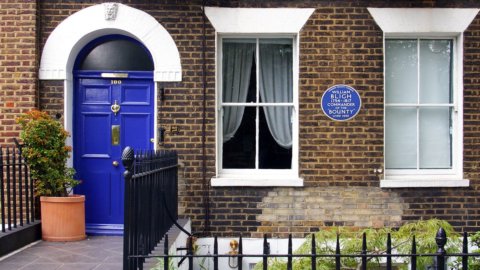A part of London's history can also be read through the 900 blue plaques that have adorned the facades since 1867 of the residences or studios where famous personalities from politics, music, art and literature have stayed. If you want to walk the road in chronological order by posting, you need to start from the house of Napoleon III and visit from there Isaac Newton, Vincent Van Gogh, Alfred Hitchcock, Charles Dickens, Sigmund Freud, Virginia Woolf and Freddy Mercury.
One plaque is dedicated to cryptographer Alan Turing, who served England during WWII, another to London icon John Lennon on the walls of the house where he wrote his songs in 1968, another to 23 Brook Street in the English capital where Jimi Hendrix, one of the most famous guitars in the world, lived through its most successful years.
Here's what we read on FIRSTARte:
London's first blue plaque was put up in 1867 on the house where Lord Byron was born, but unfortunately the building was demolished in 1889, so now the oldest existing plaque is the one dedicated to Napoleon III, also dating from 1867.
It was there Society of Arts to start the project in 1866 at the suggestion of the liberal politician William ewart, starting the tradition of marking with a simple and elegant symbol the places in London where some of the greatest personalities in history lived or worked: from scientists of the caliber of Isaac Newton to artists like Vincent Van Gogh, from Alfred Hitchcock a Charles Dickens, from Sigmund Freud a Oscar Wilde o Virginia Woolf and politicians abound, but luckily the spirit of the plaques remains placidly apolitical.
The idea started from ewart in 1863 and its realization also contributed to the famous designer and theorist of industrial design Henry cole. Over time, the commemorative plates have changed shape and colour, going from blue to the cheaper brownish one, due to the needs of the manufacturer of the time, i.e. the Minton, Hollins & Co. The Society of Arts he made 35 in all, of which only half survived. Later, in 1901, the so-called "blue plate pattern" came under the supervision of the London County Council, who decided to standardize the color by opting for the now classic cobalt blue.
Discover more the article on FIRSTARte.





